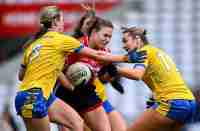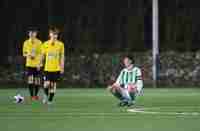When Gaelic football fans flock to GAA grounds around the country later this month for the start of the new season, they will encounter the biggest changes that the game has ever seen in terms of the playing rules.
The Football Review Committee, under former Dublin manager Jim Gavin, spent almost 12 months devising what changes needed to be made to a sport which had become an increasingly poor spectacle in recent years due largely to negative tactics.
So what can the public expect to see? There are seven core changes that will come into force. They are as follows:
- The throw-in at the start of both halves will now be contested by only one player from each side. The other two midfielders will take up a position on opposite sidelines and will come on to the field after the throw-in.
- Kickouts will take place from the 20 metre line but must travel outside a new 40 metre arc. Players can stay inside the 20 metre line for the kickout as long as they are more than 13 metres from the ball. Goalkeepers will still be allowed to come out the field, but they can only take a pass from a teammate if they are in the opposition half.
- Solo and Go: A player who is fouled has the option of tapping the free to himself and continuing to play on.
- Teams must keep a minimum of three outfield players in each half of the field at all times. There will be a broken line across the field at the halfway point to ensure that rule is enforced.
- The existing advanced mark will be scrapped and will be replaced by a mark awarded if the ball is kicked from outside the 45 metre line and caught inside the 20 metre line.
- A new ‘scoring arc’ will be introduced at each end of the field extending outwards from the existing 20 metre line. Successful shots from outside the arc will be worth two points. 45s will still only be worth one point if scored. A two-point score will be indicated when an orange flag is waved by the umpire.
- If a player tries to stop a free being taken by an opponent the ball will be brought forward 50 metres by the referee. This punishment also applies when there is dissent aimed at a referee. If team officials aim abuse at the referee the referee can award the opposing team a 13 metre free.
There are some other changes too. The only player on a team that can seek clarity from a referee on any decision is the team captain.
In terms of time keeping, a public clock and hooter similar to the system used in ladies football will be used where it is available.
The rules with regard to any melee that breaks out have also been strengthened and any player who is seen to be contributing to a melee will receive a straight red card.






